All new technologies have a learning curve. And with the cataclysmically desirable new Alienware 32 AW3225QF, we’re certainly learning some lessons about OLED as a display solution for PC gaming.
In fact, this isn’t the first of the brave new 4K OLED generation we’ve tested. A few weeks ago I cast my beady, dried-out peeps over the Asus ROG Swift OLED PG32UCDM. That’s another 32-inch 4K panel with Samsung’s latest QD-OLED technology, albeit with the flat option where Alienware has opted for curved. And what a blast it was.
But as we put in more hours with this new format, the pure wow factor is increasingly accompanied by familiarity. And with that comes, well, a slightly more grounded sense of what these monitors offer gamers. This is an incredible display. But like its Asus competitor, this Alienware is an elusive angstrom or three away from perfection. Living with these 4K OLED panels is just a little bit complicated.
However, let’s start with the basic speeds and feeds. Once again, we’re talking 32 inches of 4K QD-OLED glory. That’s important because until these new panels arrived, you couldn’t have both OLED visuals and nice, tight pixel density. Previous OLED monitors were derived from TV panels with relatively low DPI.
Alienware 32 AW3225QF Specifications
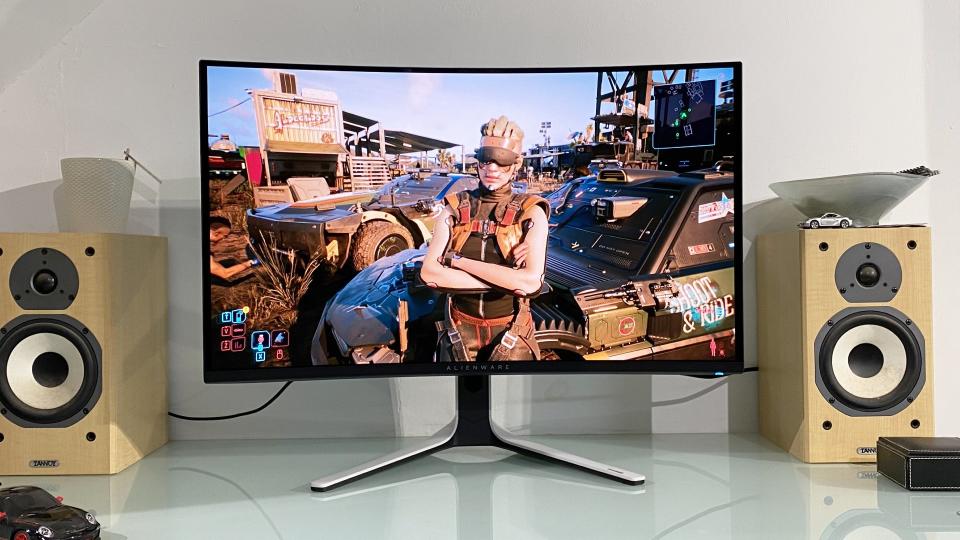

Screen size: 32-in
Solution: 3,840 x 2,160
Brightness: 250 nits full screen, 1000 nits max HDR
Color Coverage: 99% DCI-P3
Response time: 0.03ms
Refresh rate: 240Hz
HDR: DisplayHDR 400 True black, Dolby Vision
Functions: Samsung QD-OLED 3rd generation panel, Adaptive Sync, 1x DisplayPort 1.4, 2x HDMI 2.1
Price: $1,199 | £989
For this 4K option, Samsung has used a new inkjet printing technique to pack 4K into a 32-inch panel. LG has its own 32-inch 4K offering, but the availability of retail monitors using that panel is a few months behind the Samsung QD-OLED. Watch this space for coverage of the LG alternative.
Anyway, despite the new production technology, the specifications look familiar. Response is rated at 0.03 ms, maximum HDR brightness at 1,000 nits, full-screen brightness at 250 nits and color coverage at 99 percent coverage of the DCI-P3 gamut. That’s all virtually identical to existing QD-OLED monitors based on the previous low-DPI panel stock, like the 34-inch ultrawide Alienware AW3423DWF.
The sub-pixel structure also remains the same. In other words, it’s still not a conventional RGB stripe, but a triangular RGB arrangement. In the past, this was important for sharpness and font display, because Windows addresses monitors based on the assumption of the RGB stripe.
But with the increased 140 DPI density of these new 32-inch 4K-class OLEDs, this is no longer a problem. Yes, if you look very closely, you can just see some text edges. But with normal use it disappears. Fonts look nice and clear.
The other notable feature is of course the 240Hz innovation. Obviously you’re going to need a killer GPU to power all those pixels at 240Hz. It’s worth noting that LG is promising a 1080p 480Hz mode for its 32-inch 4K panel, using integer doubling to supposedly achieve native quality 1080p pixel definition on a 4K panel. It will be interesting to see how that turns out, although all previous attempts at doubling integers to achieve lower resolutions have ultimately failed to deliver the claimed “native” experience.
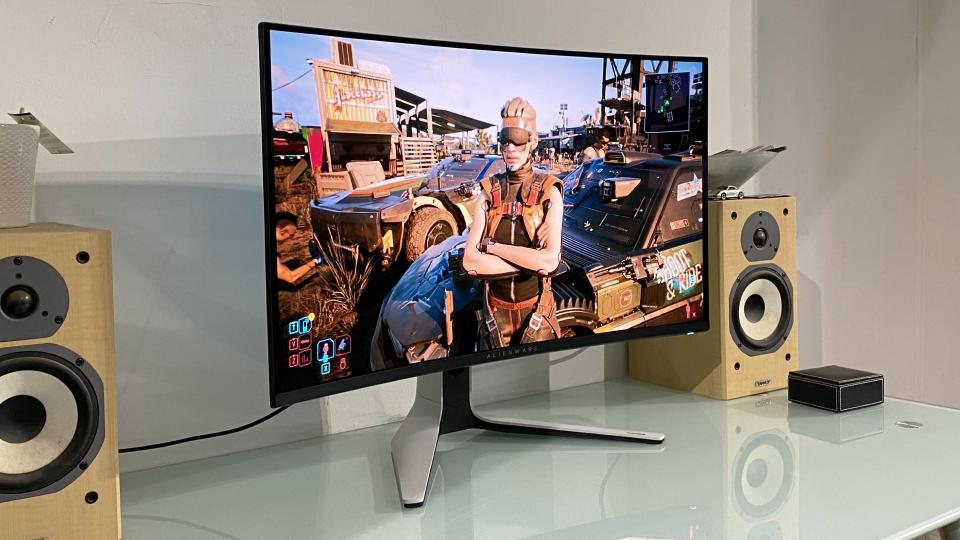

Other notable features include DisplayPort 1.4 plus two HDMI 2.1 connections and a USB hub. What you don’t get is USB upstream for video input or laptop charging. There’s also no audio output for connecting headphones or speakers, which is a slightly strange omission. The KVM switch from the Asus competition is also missing.
The whole thing is rounded out with a touch of the usual AlienFX RGB lighting and Alienware’s signature aesthetic, with the familiar Storm Trooper-style white cladding on the rear of the chassis. I’m not a big fan of the look. But it’s nicely put together and a little more resolved than the harsh, dated and adolescent Asus alternative.
If that covers the look of the hardware, what about the image quality itself? No surprises, it’s a blast. The triple whammy of perfect OLED lighting per pixel with 4K pixel density and a glossy panel coating is to die for.
To achieve the brightest SDR results, you actually need to enable HDR.
Strikingly, there is no brightness variability at all in SDR mode. You can scroll around or resize windows as much as you want, the brightness will remain at the same 250 nit level. That’s good, because the variability on some OLED panels can be very distracting. Early OLED monitors from LG suffered a lot, with brightness dropping if you dared to maximize a mostly white browser window, for example.
That said, the Alienware 32 AW3225QF has even more pop in HDR mode. And that also applies to SDR content. To achieve the brightest SDR results, you should enable HDR and then maximize SDR brightness in the Windows display settings tool.
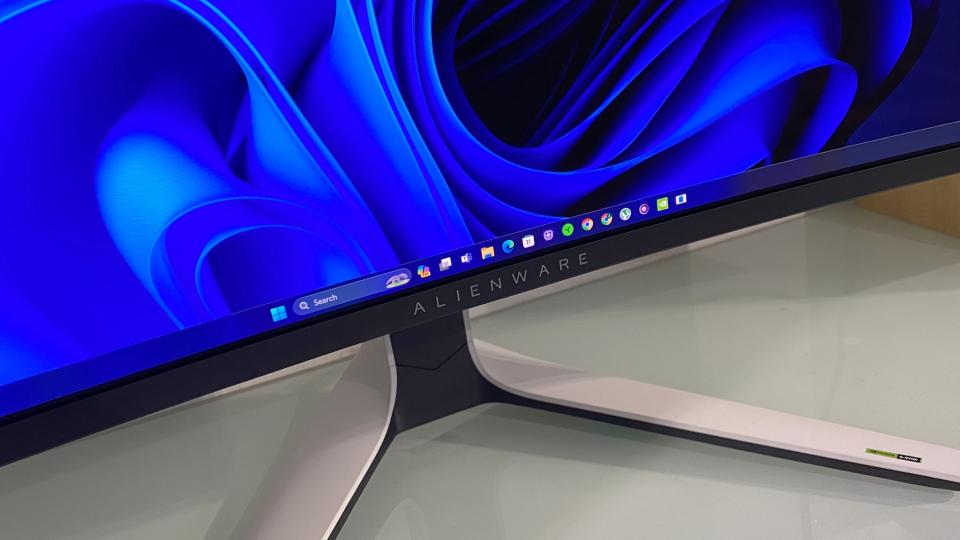

Once that’s accomplished, you’ll notice some variation in panel brightness when resizing windows and the like. But it’s just a little bit and you have to really look for it to notice it. Anyway, that’s not the only minor downside you need to take into account.
The Alienware 32 AW3225QF produces very, very different results depending on which of the whopping nine HDR modes you choose. There are six of what you might call conventional HDR modes, plus three Dolby Vision HDR modes.
The calibration here feels even more powerful than the same QD-OLED 4K technology in the Asus ROG Swift OLED PG32UCDM.
Frankly, it’s all a bit baffling. Making matters worse, switching between some, but not all, HDR modes can cause the screen to re-sync with your PC. For starters, that takes time, making it harder to compare and choose between modes. It also kicks you back to the desktop when you’re gaming, which can cause some titles to crash. What a palaver.
Then, for example, there’s the fact that HDR 400 mode looks best for outdoor scenes, but crushes detail for dark indoor gaming scenes and at night, while HDR 1000 looks extremely spectacular for the latter, but rather dull for brighter images.
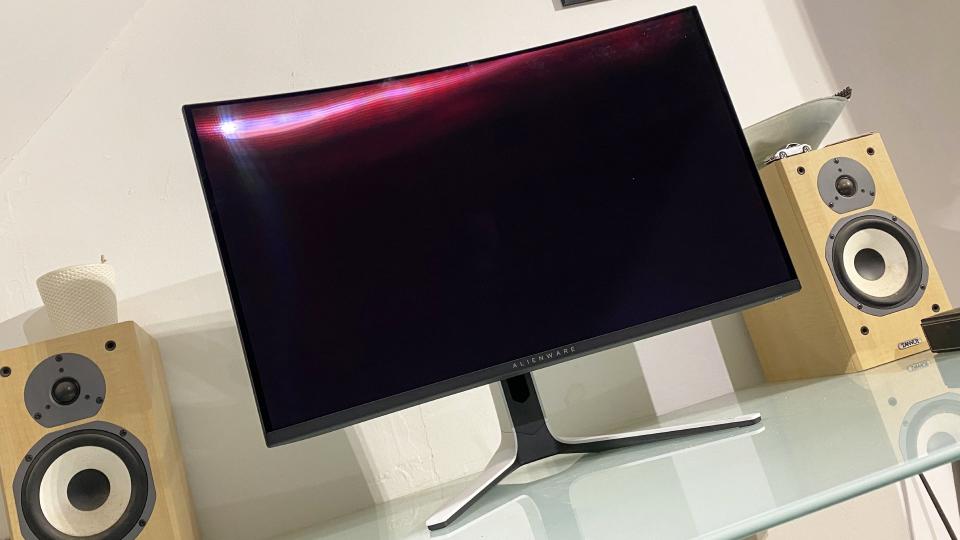

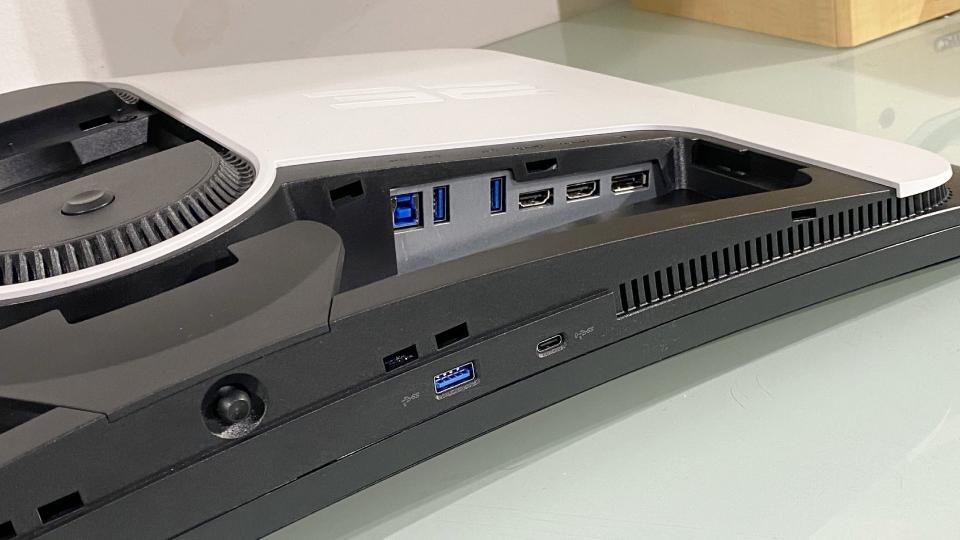

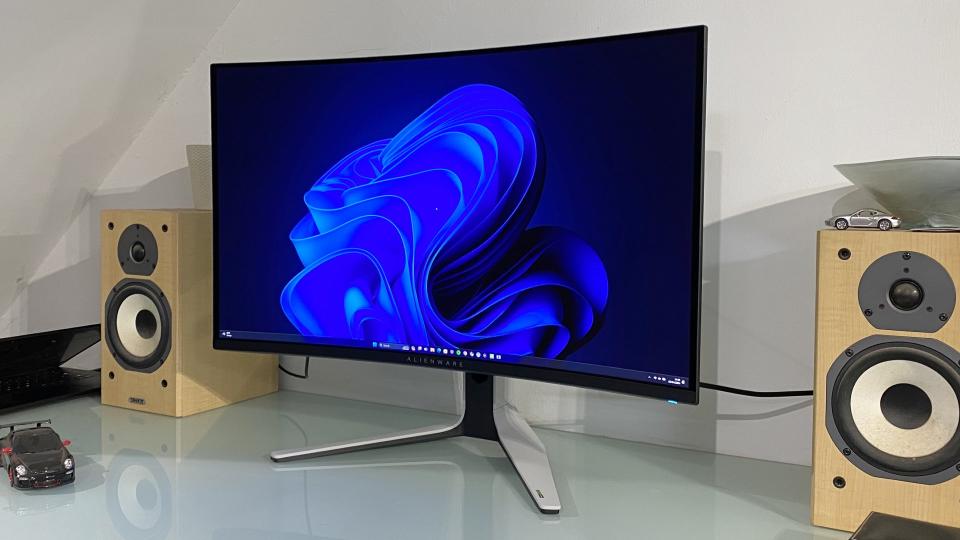

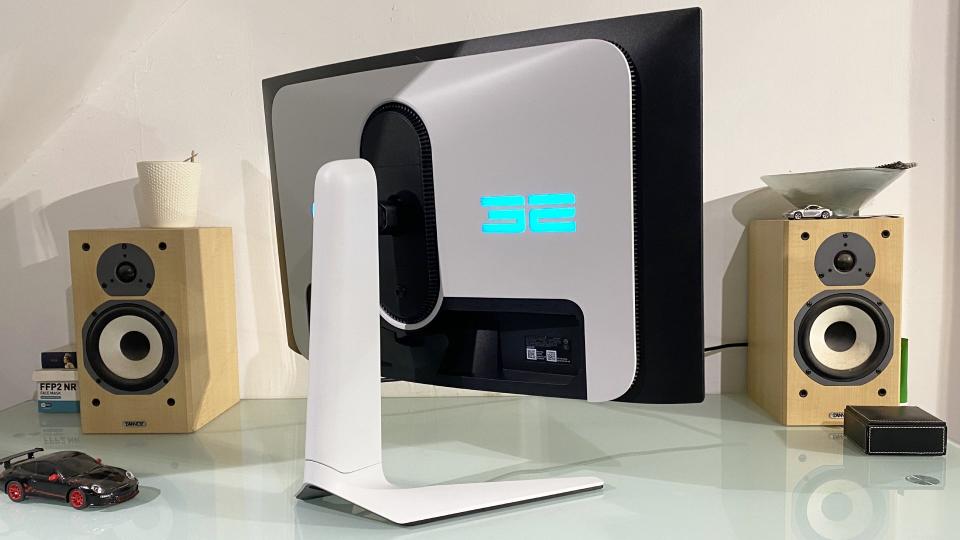

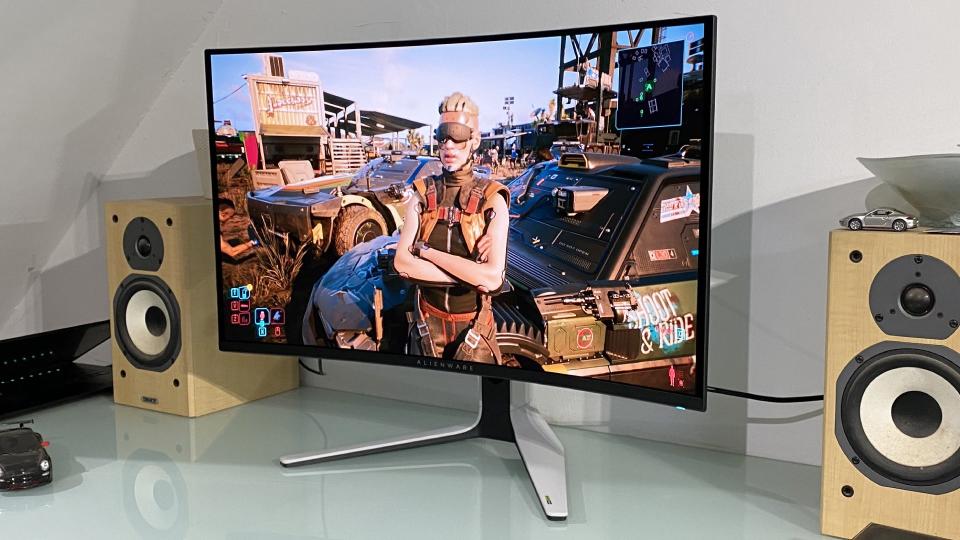

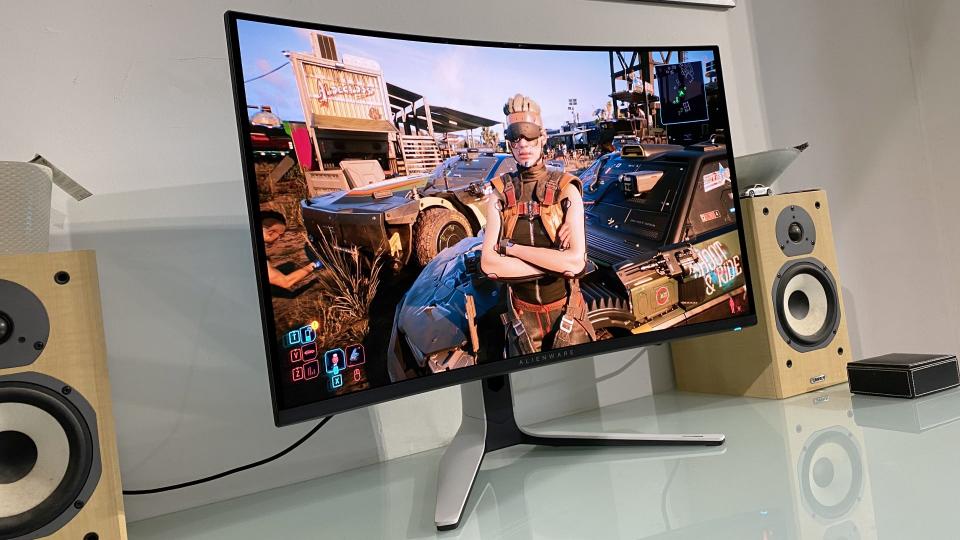

In other words: there is no single optimal setting for HDR. It depends on the game you’re playing and even the scene in question. This applies to any screen. It’s just much more acute here.
That said, this panel still positively rocks. The calibration here feels even more powerful than the same QD-OLED 4K technology in the Asus ROG Swift OLED PG32UCDM. I don’t even mind the slight panel curve, something that normally feels redundant on a 16:9 as opposed to an ultrawide monitor.
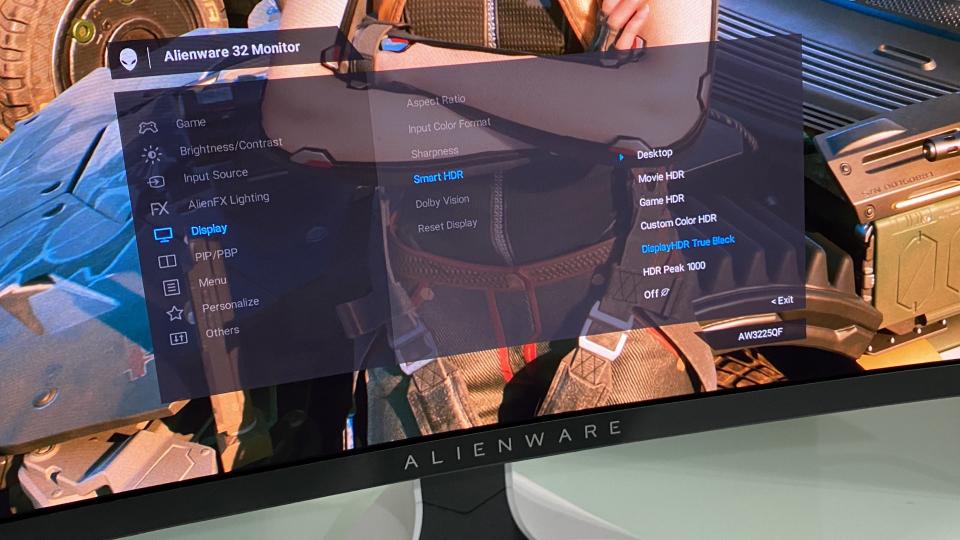

As if that wasn’t enough, you also have to deal with the whole OLED burn-in thing. Alienware covers the panel against burn-in for three years. So that is quite reassuring. But you still have to tolerate the burn-in mitigation prompts that pop up every now and then and generally wonder whether you should toggle the “Pixel Refresh” or “Panel Refresh” security algorithms.
Put it this way: life was a lot easier with an SDR LCD monitor, that’s for sure. The advantage, of course, is the images that no LCD screen can match, even the latest and greatest IPS models with full-array local dimming.
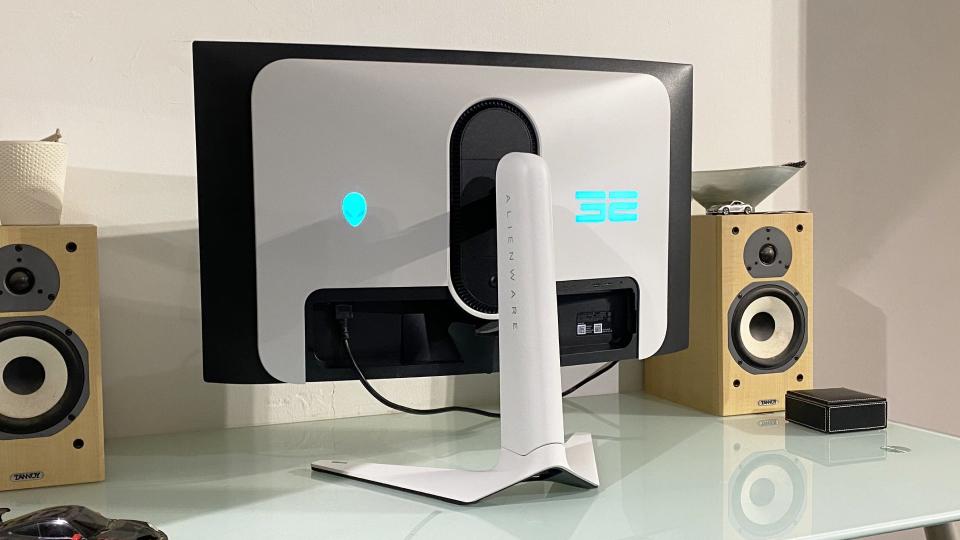

The contrast that this Alienware delivers is simply amazing. There’s a scene in Cyberpunk 2077 that features an underground bar covered in neon light strips and signage. On this monitor it really looks like those neon lights are real. They absolutely pop from the panel, while the pixels around them remain inky and effortlessly black.
Then there’s the lightning-fast pixel response. There’s a clarity to the movement on these OLED screens that LCD panels can only come close to with backlight strobing. And backlighting does terrible things to brightness and colors.
Buy as…
✅ You want the combined glory of 4K sharpness and OLED lighting: Perfect lighting per pixel, incredible OLED speed and 4K pixel density is an incredible combination.
Don’t buy if…
❌ You want a simple life: With all the HDR settings and OLED panel management, life isn’t easy in 4K OLED land.
So this is undoubtedly a groundbreaking gaming experience. It’s as good as 16:9 gaming gets right now. The increased pixel density also means that, along with its Asus foe, this is the first OLED gaming option that also makes for a great all-round PC monitor. The pixel density is finally there, as is the full-screen brightness.
If you prefer ultra-wide gaming experience, and we’re behind you if you do, then the 16:9 aspect might feel a bit sloppy. For example, you can get Samsung’s epic 49-inch ultra-wide OLED G9 panel for less. It’s not a great all-rounder, but it feels like a lot more monitor for the money.
In an ideal world, there would be a 5K2K ultra-wide OLED option. At that point you could arguably put the whole gaming monitor thing to bed. The latest roadmaps imply that this will indeed happen. But in the here and now, and despite the minor complications, this is as good as OLED gaming gets.